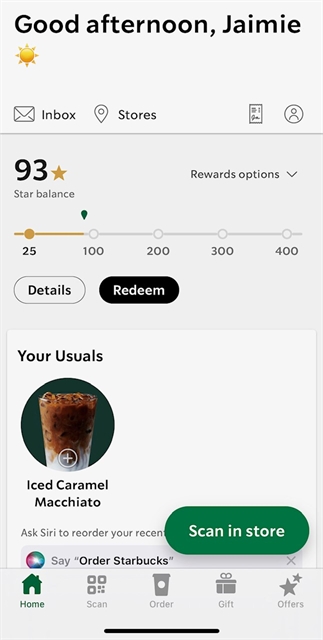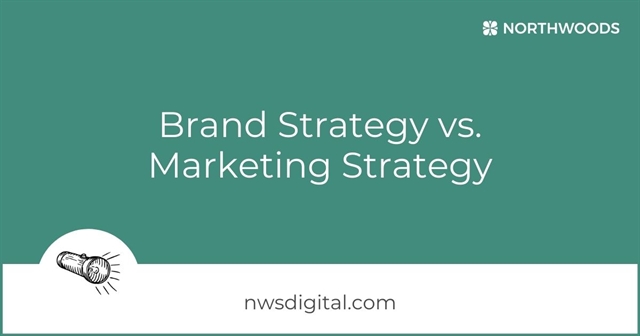By Jaimie Somlai
September 11, 2023
5 Minute Read
Updated: Sept. 11, 2023
Originally Published: June 8, 2019
If you think your organization is providing a stellar customer experience, I have some disturbing news for you.
According to a study by Acquia, 67% of consumers couldn't remember the last time a brand exceeded their online expectations.
Adding insult to injury, a recent study by Emplifi found that 52% of US consumers say they sometimes or always walk away from a purchase due to a bad customer experience. And according to PwC, 59% of survey respondents said they would walk away from a brand they loved after several bad experiences; 17% would walk away after just one.
Ouch.
The good news: Marketers and brands who get CX strategies right will shine bright among the crowd, encourage customer interaction with the brand, win new business, and build brand loyalty.
Some brands are getting it right when it comes to their online experience.One of those is Starbucks.
Starbucks
The Starbucks app makes it incredibly easy to order your favorite latte, customize it, and pick it up. With a saved credit card number, it takes a mere two taps to replenish your rewards card balance. Easy ordering = more ordering.
A simple User Interface (UI), constantly expanded and improved functionality, fun games that engage customers and offer prizes, and the ability to customize and pre-order drinks and food have made me – and millions of others – Starbucks brand loyalists.

Starbucks (largely – despite some customer dissatisfaction over recent star rewards program changes) understands their customers deeply. They know what motivates them, they know what they value, and they’ve built their online customer experience around that knowledge.
But how do you do Starbucks CX without a Trenta-sized digital marketing budget?
Go Back to the Basics to Improve Your Online Experience
Naturally, big-budget marketers have an easier time wowing customers in the digital space. But even they don’t always get it right, and small organizations can create excellent online customer experiences.
It’s important to get the basics right. Many businesses don’t. Shoring up fundamentals goes a long way toward improving your CX and improving your competitive position, and it doesn’t require a complete CX digital transformation.
Whether you’re big or small, start here:
- Know your audience. How deeply do you understand your audience, their pain points, motivations, and needs? You must have this knowledge to create good CX. Acquiring that knowledge is Mission 1.
- Ensure that your digital properties and efforts support your brand promise. Does your website experience support or detract from what your customers and prospects expect? Your promises, explicit and implicit, drive those expectations. Falling short feels like betrayal. Too many brands fail to align what they promise and what their online experience delivers.
For example: If your brand promises convenience, nothing says “not convenient” more than poor site structure or ineffective site search. No one perceives the inability to find what they seek as convenient.
If you’re a nonprofit and your brand focuses on telling stories of people you’ve helped, are those stories front and center on your website and easily found? Do you integrate them into your social media strategy?
- Conduct a user experience audit. Spend some time and budget auditing usability (often referred to as UX) to identify your site visitors’ most common pain points. Then work to ease that pain. (Check out our blog post 3 Ways to Learn How Users Navigate Your Website for helpful user research tips.)
Sometimes, this can mean a total website or app overhaul. More often, you’ll uncover simpler problems with simpler solutions. For example:
- Shorten a donation form that’s too long and frequently abandoned before submission.
- Create an FAQ that answers questions visitors keep asking over the phone.
- Rename confusing navigation labels so they say exactly what content lives beneath them.
- Use a consistent voice across all channels. Your brand voice – the unique way that your brand communicates – should be channel agnostic. Adjust your tone based on your message and your writing style or medium, but do it within brand guidelines. Consistency creates familiarity for your customers.
- Make sure your website is accessible. Is your website accessible to everyone, including those with disabilities? According to the US Census Bureau, nearly 1 in 5 Americans has a disability. If your website isn’t accessible, those potential customers can’t use it, resulting in frustration for them and lost business for you.
- Adhere to all privacy rules and regulations. Nothing damages a brand and online experience more than visitor mistrust of what you do with personal information. Make sure you understand privacy laws and comply with them.
- Consider the omni-channel brand experience. In today’s multi-channel world, consumers expect a consistent experience across channels and devices. They expect you to know them (“Good Morning, Jaimie,” said Starbucks with a quick link to one of my usual orders) regardless of the device at hand. This piece is a big challenge for many brands, even the big ones.
If you can’t tackle that big issue, do what you can with the basics. Ensure consistent use of imagery, fonts, and logos across channels. Inconsistency across your digital footprint can throw consumers off. Anything that makes a site visitor stop and think before hitting a checkout or donate button costs you money and should be removed or improved. (Pet peeve: Third-party shopping carts or payment solutions that aren’t integrated with your site and thus look and feel wrong.)
- Review your content. Is your content optimized for the web?
- Do you use H1s, subheads, and bullet points to make scanning easy?
- Do you write at a grade level that matches your users?
- Is your content easily digestible? Does your content answer your users’ most common questions?
Here are some excellent tips for writing web content that breaks through the noise.
- Analyze the competition. Sometimes, finding unique ways to stand out from the pack can be as simple as knowing what the pack is doing. Review competitor sites to understand the quality of the online customer experience they deliver. What unique online features and functionality do they offer? Can you find relatively easy, cost-effective ways to top their customer experience?
User experience improvements aren’t always expensive or overwhelming. After all, creating a great online customer experience – and a great brand experience – is all about removing friction.
Feeling obliged to create a Starbucks-level digital experience can make even the most enthusiastic of us want to stay in bed in the morning. Don’t despair! Keep it simple by going back to the basics. You don’t have to be perfect. The experience you offer just has to be a little ahead of the pack. And as we saw in our opening statistics, the rest of the pack isn’t all that swift.
If you need to understand how well your site is delivering on usability, get started with a UX audit. We can help you uncover what's working, what's not, and where to focus your time and efforts on improvements. Reach out to us today!
Related Blog Posts

Brand strategy and marketing strategy are distinctly different from one another, yet equally important to your long-term business success. Here's an overview of each and how they work together to drive growth, profitability and loyalty.

How can marketers and business owners convey their messages – especially complex ones – to distracted internet users in an overwhelmingly noisy environment? These four tips will help you stand out.

Gathering data is critical to understanding what visitors do on your website. Here are three methods to give you the data and insights you need.